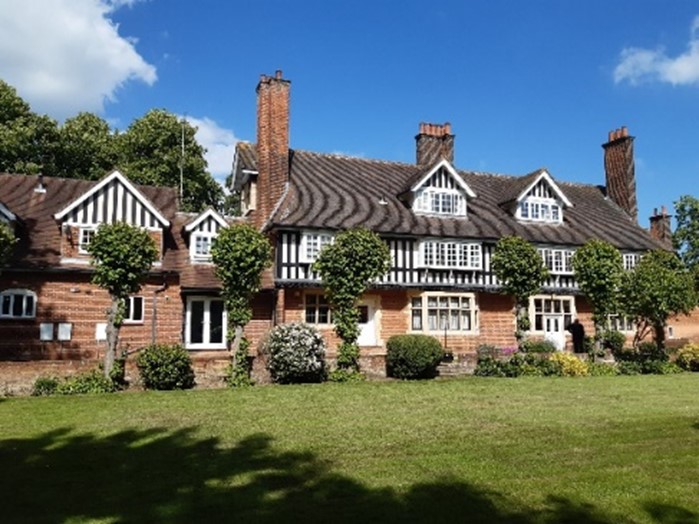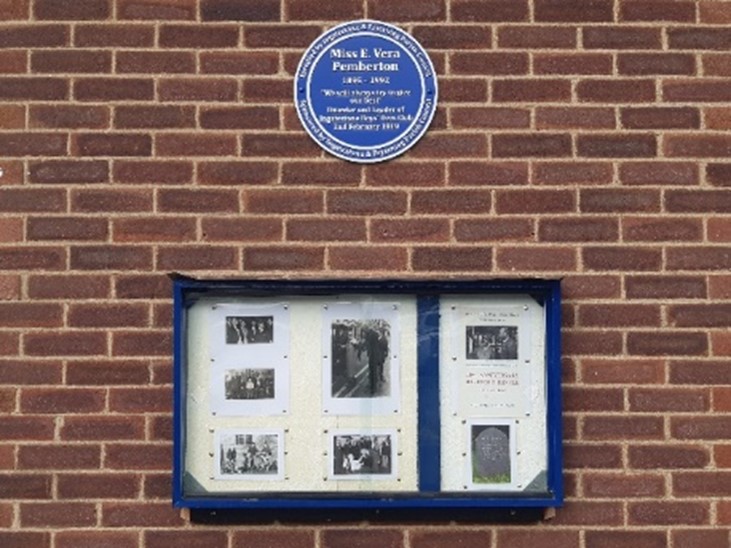Ingatestone & Fryerning – History and Culture
To tie in with the new Ingatestone Museum it is proposed to create a Heritage Trail to take in the main village High Street and surrounding area bounded by the A12 and railway line, and the important outlying sites; Ingatestone Hall, the one major tourist attraction in the Parish, and then Fryerning, Beggar Hill and Mill Green.
Ingatestone Hall is the setting of one of the most famous Sensation Novels of the Nineteenth Century, Mary Elizabeth Braddon’s 1862 Lady Audley’s Secret. Mill Green Common, the Open Greenspace on both sides of the road to just beyond The Viper PH, and the surrounding woods managed by Lord Petre’s Estate, are part of ancient Writtle Forest, with a history dating back to the Middle Ages, which include a recorded Hermitage for a monk and a Holy Well or Spring at Monk’s and Barrow’s Farm, just in Highwood Parish. Also, in this area there is the site of a Romano-British Villa at Handley Barns, circa 125 CE, and the location of Medieval pottery production, known as “Mill Green Ware”, circa 1270-1350. During WW1 Mill Green Common was used by the British Army for training purposes, a complex known as the “Southern Army Trench Warfare and Bombing School”. Theory lessons were given in classes at the Working Men’s’ Club (now the Community Club) with the techniques put into practice during mock battles on the Common, on the large area to the right of the road beyond The Cricketers PH, up to the ancient depression known as Moore’s Ditch.
This trail will cover important buildings, landscapes, ecology and historical figures and events and will hopefully be produced as a handy guide and map to encourage local tourism.

The Gatehouse, Station Lane, Ingatestone (first built 1884):
Designed by architect George Sherrin (1843-1909); it was his own house. He is well-known for the design of several Metropolitan Railway buildings in London including parts of South Kensington Station
At the same time the Parish Council, with assistance from IFHAS, is involved in the Essex Women’s Commemoration Project, to recognise prominent Essex women throughout history who are not well known. This project was designed to mark the Platinum Jubilee of Queen Elizabeth I and will continue following Her Majesty’s death. In Ingatestone and Fryerning we have identified four candidates, which include two sisters:
Dorothy Wadham (1534/35-1618):
The daughter and eldest child of Sir William Petre, who carried out the terms of her late husband’s Will by founding Wadham College Oxford, the first woman of her rank to found a college at either Oxford or Cambridge. Wadham Close in Fryerning Lane is named after her. The College is the benefactor of Fryerning Church and owns land in the area, including College Wood and Fryerning Wood, between Blackmore Road and Beggar Hill/Mill Green.

The Miss E. Vera Pemberton Blue Plaque:
Unveiled by Mr Alan Pudney, President of Ingatestone Boys’ Own Club, in September 2022
Miss E. Vera Pemberton (1895-1992):
Miss Pemberton, or Vera, as she was often referred to, was Founder and Leader of Ingatestone Boys Own Club in 1919. Her father Robert was Rector of Ingatestone with Buttsbury Parish 1919-1940. It is he who gives his name to Pemberton Avenue and Court.
Dorothea (1881-1964) and Madeleine (1884-1954) Rock, “The Smashing Rock Sisters”:
The two sisters, who lived in Red House, Station Lane, were Suffragettes and members of the WSPU founded by Mrs Emmeline Pankhurst (1858-1928). They both served terms of imprisonment for their activities, which included smashing windows at The Mansion House as a protest regarding comments made by the Lord Mayor of London at the time. A fellow Suffragette and friend, Grace Chappelow (1884-1971), has a block of flats named after her, between Parkway in Chelmsford and the Railway Station. Dorothea also defaced and refused to complete the 1911 Census, which was the first to be filled in solely by the householder, on the grounds that as women did not count under the law then they would not be counted! Chelmsford Museum has an excellent display about these brave and outstanding young women. Incidentally, Miss Pemberton was a correspondent of Sylvia Pankhurst (1882-1960) during WW2.
The Parish Council has funded the first of these plaques for Miss Pemberton which was unveiled in September on the wall of Pemberton Hall, which is at the top of the Community Club car park.
Wadham College Oxford has provided the finance for the Wadham plaque, which it is hoped to be erected soon on the rear of the Platform 1 building at the Station. A location on a now refurbished building, which will overlook her childhood home at Ingatestone Hall across the fields. This is a station and railway line that has an historic connection with the Petre family. Negotiations have begun to produce and erect “The Smashing Rock Sisters” plaque on the exterior garden wall of the Red House, which will again be funded by the Parish Council.
Robert Fletcher
Ingatestone & Fryerning Historical and Archaeological Society
November 2022
